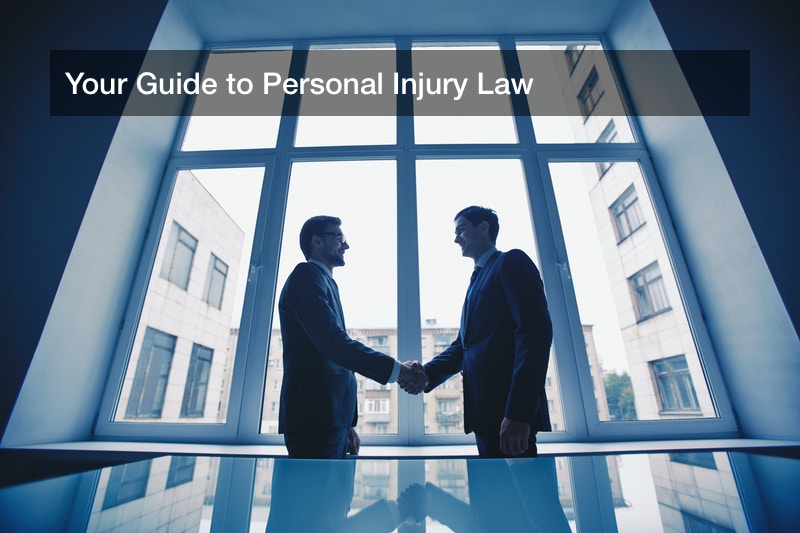
Although the U.S. has over 1.3 million lawyers practicing in many different fields, personal injury law is one of the most recognizable practice areas for lawyers. You have likely seen TV ads, billboards, and print advertisements for at least one personal injury law firm in your town.
But how much do you know about personal injury law? Here are ten facts about personal injury law and the personal damages you can recover:
Personal Injury is a Practice, Not a Specialization
Under the rules of professional practice followed by most states, lawyers cannot state or imply they are specialists unless the state certifies lawyers as specialists. Since most states do not certify specialists, lawyers can say that they “focus” on personal injury or have “experience” recovering personal damages, but will avoid saying they are “specialists” in personal injury.
The fact is that all law students have to learn the legal principles that apply to personal injury cases. Thus, anyone who graduated from law school would have the background to practice personal injury without any special training.
However, lawyers who choose to practice personal injury law usually have a particular passion for helping people recover personal damages for injuries caused by someone else.
The Legal Term for Personal Injury Law is Tort Law

When law students study personal injury law in law school, the course is called tort law or torts. Torts are wrongful acts that lead to civil liability. They are distinguished from crimes, which are wrongful acts that lead to criminal liability. In other words, a personal injury lawyer deals with tort law the same way a criminal defense lawyer deals with criminal law.
Tort law is broadly divided into three theories of liability:
- Intentional acts: If a person causes personal damage to another with the intent to commit the action, the action qualifies as an intentional tort. For example, deliberately throwing a chair at someone during a bar fight would be assault. If the chair actually hits them, it is battery.
- Negligent acts: If a person engages in a course of action that fails to meet the standard of reasonableness and someone suffers personal damage as a result, the action constitutes a negligent tort. For example, if a driver is texting while driving and accidentally hits a pedestrian, the driver’s actions would likely be considered negligent.
- Strict liability: Strict liability is applied in certain situations in which the underlying act is considered to be totally within the control of the accused tortfeasor, so the injured person is entitled to damages regardless of what the tortfeasor knew. For example, in most states, if a dog bites someone, the dog’s owner is strictly liable because the owner had sole control of the dog and was solely responsible for making sure it could not cause personal damage to anyone else.
Some Torts May Also Be Crimes
Despite being distinct fields of law, there can be overlap between tort law and criminal law. However, not every tort is a crime and not every crime is a tort.
The overlap occurs when a person’s civil responsibilities are parallel to the person’s responsibilities under criminal statutes. For example, if a person starts a fistfight by punching a neighbor, the person could be civilly liable under tort law for battery and criminally liable under criminal law for criminal assault. As a result, the person who threw the punch might be sued for personal damages caused to the victim and could also be prosecuted and jailed.
On the other hand, many crimes have no civil counterpart in tort law. For example, exceeding the speed limit is a crime in itself, but is not a tort unless someone is injured as a result. Similarly, tax evasion is a very serious crime that might cause a person to seek a bondsman for a bail bond and legal defense. However, there is no tort for cheating on taxes.
Similarly, many torts have no criminal counterpart. For example, defamation is a tort that allows someone to sue when someone else prints or says false statements of fact that damage the victim’s reputation. However, there is no crime of defamation primarily due to the U.S. Constitution’s First Amendment that protects people from government laws restricting speech.
Intentional Torts Provide Some Benefits Over Negligent Torts
If a wrongful action can fall under both an intentional tort and negligence, it is worth alleging the intentional tort in addition to negligence. That is, when your legal team reviews your possible legal claims, they may identify facts that suggest your personal damage may have been caused by an intentional act while other facts suggest simple negligence. As a result, they may include claims for both intentional torts and negligence.
For example, suppose you were injured by someone who threw a rock off an overpass that struck your vehicle. Depending on the circumstances of the action, this could be interpreted as intentional acts of assault and battery or merely a negligent action.
The drawback of intentional torts is that you must prove that the wrongdoer had the intent to commit the action. It is often difficult to get into the head of another person and identify what they were thinking when something happened.
The benefit of intentional torts is that you are not required to prove your damages. That is, once you prove the intentional tort occurred, the law presumes you were damaged and the only open question is the amount of your personal damages.
The benefit of negligence is that you do not need to prove what the wrongdoer was thinking at the time of the action. Instead, you just need to show that the wrongdoer’s actions failed to meet the standard of reasonable care.
The drawback of negligence is that you have to prove you were damaged as part of your claim. If you suffered no damages, you cannot succeed on a theory of negligence.
Personal Injury is Broader than Car Accidents

The key part of the phrase “personal injury lawyer” is “injury lawyer.” That is, you can consult an injury lawyer whenever you have suffered personal damage to your body, mind, or reputation, regardless of the cause or mechanism.
A few of the more common claims that personal injury lawyers deal with include:
- Car accidents: Most of the time, car accidents are caused by one or more acts of negligence when at least one driver operates a vehicle without exercising reasonable care.
- Medical malpractice: Medical malpractice occurs when a health care provider, including doctors, nurses, and therapists, fails to provide the level of medical care that is reasonable under the circumstances.
- Premises liability: When a property manager or owner knows or should reasonably have discovered a hazard and failed to remedy it or warn guests of it, anyone who is injured by the hazard can sue for negligence.
- Products liability: Products liability is based in strict liability, although some states also impose some negligence elements. Generally speaking, a manufacturer, distributor, or retailer is liable for injuries caused by products that are defective.
- Sexual abuse: Sexual abuse by another, including an employer, clergy, teacher, or doctor, usually fits the definitions of intentional torts such as false imprisonment, intentional infliction of emotional distress, assault, and battery.
Auto Accidents are the Most Common Cause of Personal Injury
Car accidents result in about 33,000 deaths and 2.2 million injuries every year in the U.S. Many of those deaths and injuries can be attributed to a specific negligent act that can form the basis of a personal injury lawsuit.
Often the negligent act will be identified in a police report about the accident and may even result in a traffic citation. In these cases, a car accident lawyer can often point to this act as the basis for pinning liability on a particular driver and that driver’s insurance company.
In many of these cases, the insurance company and driver have little basis to challenge liability and the entire personal injury case centers around the extent of the victim’s damages. However, despite the simplicity of many of these cases, insurance companies can be notoriously difficult to deal with.
The benefits of hiring a car injury lawyer include:
- The lawyer is likely to have had prior dealings with the insurance company that can help the lawyer develop a negotiating strategy.
- The law firm can track all of your medical bills and calendar all of your deadlines so nothing gets missed.
- If the insurance company drags out settlement negotiations, the lawyer can represent you in a lawsuit against the insurance company and the at-fault driver.
Medical Malpractice Cases Can Present Unique Obstacles

If you have suffered an injury due to the failings of a doctor, nurse, therapist, or staff member while receiving medical treatment, you may be able to file a claim for medical malpractice. Medical malpractice occurs when the medical care provided fails to meet the reasonable level of care that should have been provided under the circumstances. Typically, a medical malpractice case won’t focus on a more minor dispute like how to treat a sprain, but will instead revolve around a major breach of acceptable medical practice that put the patient’s health and livelihood at risk.
There are many reasons to hire a medical malpractice lawyer for these complex cases:
- The lawyer will usually have connections with doctors who can examine you, provide a second opinion, and testify as an expert witness in a lawsuit.
- The lawyer will be familiar with dealing with medical review boards used by many states to weed out frivolous medical malpractice claims.
Most importantly, a lawyer will know how to deal with any statute of limitations issues that arise. Many medical malpractice claims are susceptible to being dismissed for being filed too late. However, many victims of medical malpractice are already in poor health, hence the reason they received medical treatment. These patients may fail to realize that their treatment contributed to their injuries leading to a delay in filing the medical malpractice claim.
Product Liability Cases are Often Huge and Complex
You have probably seen the ads on TV for lawyers handling class action lawsuits for asbestos exposure, SUV rollover accidents, and drug side effects. These class action lawsuits are for product liability claims. Because they often involve billion-dollar corporations and thousands of injured victims all across the United States, these cases are usually the largest and most complex cases filed by a personal injury or wrongful death lawyer.
Product liability lawsuits can be filed for three types of defects:
- Design defects: If a product is inherently defective, it contains a design defect. A design defect cannot be corrected, except by redesigning the product. This inherent defect makes the product unsafe to use under any circumstances. Examples of design defects include asbestos insulation and lawn darts.
- Manufacturing defects: If a product can be produced safely, but the manufacturing process introduced a defect that caused products to fail, the product contains a manufacturing defect. An example of product with a manufacturing defect was the Bridgestone-Firestone tires that suffered tread separation during the late 1990s and early 2000s.
- Warning defects: If a product has a known or foreseeable hazard but lacks warnings against that hazard, the product has a warning defect. For example, tobacco companies were aware of the cancer risk posed by tobacco products, but failed to warn smokers.
Premises Liability is a Form of Negligence

Premises liability arises from the duty that a manager or owner of property owes to others that are legally on that property. These legal duties run from landlords to tenants, restaurants and shops to customers, and even homeowners to guests.
The most familiar form of premises liability arises from slip-and-fall cases. Specifically, if a manager or owner of property knows of a hazard, or fails to conduct reasonable inspections for hazards, the property owner is responsible for any injuries and personal damage caused by the hazard.
For example, if a building has a loose handrail in a stairwell and a customer slips and falls while ascending or descending the stairs due to the broken handrail, the building owner can be sued for personal injury.
Premises liability claims are not limited to slippery floors or broken handrails. Other examples of premises liability claims include poor lighting in parking lots that leads to auto accidents, objects falling from ceilings or shelves, and inadequate security that fails to protect customers and guests from known criminal threats.
Premises liability is a form of negligence claim. The property owner is not strictly liable for all injuries that occur on the property. Rather, the property owner is liable for failing to uphold a reasonable degree of care. If a hazard is unknown to the person responsible for the property and could not have been discovered by a reasonable inspection, liability could be difficult to establish.
Many Types of Damages May Be Recoverable
Personal injury damages usually fall into three categories:
- Compensatory damages: These awards are intended to compensate the plaintiff for expenses incurred. For example, medical bills and vehicle repairs would be covered by compensatory damages.
- Consequential damages: This represents money to cover any foreseeable consequences. Lost wages, emotional distress, and pain and suffering could be covered by these types of damages.
- Punitive damages: These are intended to punish the tortfeasor for either a long-standing pattern of conduct or to discourage the tortfeasor from engaging in the same conduct again.
Personal injury law covers many different types of cases and injuries. However, the common thread running through personal injury cases is that a person can be civilly liable for engaging in an intentional or negligent act that causes personal damage to another person’s body, mind, or reputation, regardless of the exact mechanism.



